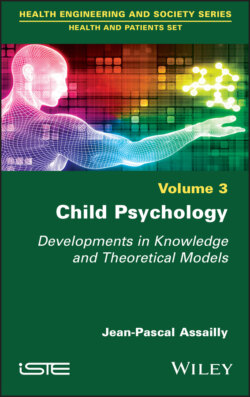Читать книгу Child Psychology - Jean-Pascal Assailly - Страница 62
1.15.3.2. Regarding children
ОглавлениеAs was well described by Zazzo (1960), twins have a specific psychic development, which he named a “screen effect”. Each twin acts as a sort of “screen” between the world and the other twin: mutual inter-identification, leading to a partial fusion between the self and objectal representations, which causes the two individuals to merge. This can cause delays in individuation and body image disorders such as recognition in the mirror at about three to four years of age instead of two and a half.
Zazzo thus considered twins as a “couple”, not as doubles, which explains the differences between twins, especially monozygotic ones. The personality is formed and transformed in and by the couple, each creating its roles according to those of the other, resulting in two complementary personalities. Thus, we see personality differences such as dominant/dominated and extravert/introvert.
Environment also causes differences: the parents of twins tend to appreciate the character of one always compared to the other.
With respect to friendship, monozygotes share 50% of their friends, same-sex dizygotes 25% and opposite-sex dizygotes 5%.
The twin relationship becomes stronger around the age of 36 months, once the separation–individuation process is completed. During adolescence, the traditional revolt against the parents may also be directed towards the other twin, which shows ambivalence between the desire for differentiation and that of twinning, which will produce an increased frequency of psychological disorders in monozygotic twins with psychosomatic and depressive disorders in the dominated twin and behavioral disorders in the dominant twin.
That said, ambivalence is not specific to the twin relationship, it can be observed in all sibling relationships: in the same way as “ordinary” siblings, twins develop relationships of closeness and conflict, of love and hatred, two complementary aspects called for in the definitions of sibling relationships. Proximity and conflict are present in twins in the same way as in ordinary siblings; ordinary and twin sibling relationships seem to be built around these two central, common and complementary dimensions, “warm” and “conflictual” relationships.
Three characteristics inherent to twin pairs may influence twin relationships: type of twinhood, gender and temperament of the children:
– monozygotes have higher scores on positive aspects of the relationship, such as companionship and empathy; dizygotes, on the other hand, have higher scores on aggression, rivalry and avoidance, although this difference has been observed in adolescence, not in infants;
– girls score higher than boys on empathy, companionship and guardianship, while boys score higher on avoidance;
– emotivity negatively impacts twin relationships in adolescents averaging 12 years of age, while sociability and activity have been associated with positive aspects of twin relationships.
Finally, there are differences in the perceptions of twin relationships between children and their parents. Indeed, the more children emphasize warm and conflictual relationships, the less their parents perceive them. Similarly, mothers value the positive aspects of the relationships, whereas adolescents are more critical.
It could be that a fundamental difference exists between what happens within the twinned pair and what the pair actually shows to outsiders, including their parents.
1 1 As we like to joke, it is often said that the populations studied by university psychology teachers are... their students.
2 2 We know the formula: what does a human baby look like? A chimpanzee fetus.
3 3 We know Freud’s famous saying, “Whatever you do, it will be wrong”.
4 4 “Tanguy” was a very popular French movie 20 years ago, Tanguy being a nearly 30-year-old son showing his desperate parents no intention of leaving the family home...
